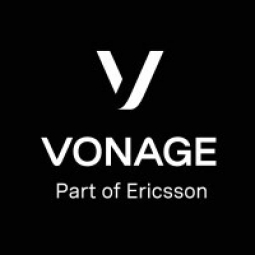Technology Category
- Sensors - Camera / Video Systems
- Sensors - Temperature Sensors
Applicable Industries
- Education
- Healthcare & Hospitals
Use Cases
- Time Sensitive Networking
Services
- System Integration
About The Customer
PresenceLearning provides access to a network of nearly 800 licensed clinical professionals who work face-to-face with students via secure, live, online video sessions. The PresenceLearning online therapy environment includes a vast library of activities for speech-language therapy, occupational therapy, and behavioral and mental health services, as well as tools for tracking student progress toward their Individualized Education Program (IEP) goals. PresenceLearning clinicians have provided over 1 million therapy sessions to pre-K12 students nationwide. They deliver high-quality therapy sessions to students of all ages and abilities across the country in a wide variety of school and home settings.
The Challenge
PresenceLearning aimed to optimize the use of time with qualified clinical professionals while still offering a personalized service to students in need. However, to deliver therapy at scale, the company needed secure and reliable video conferencing technology that would work well even in settings with lower bandwidth. This was a particular challenge for many rural school districts that rely on teletherapy to serve their students with special needs. Without teletherapy, those students would not be able to receive the critical support they need to succeed in school due to a scarcity of qualified clinical professionals nationwide.
The Solution
PresenceLearning integrated the Vonage platform’s interoperable web and mobile SDKs into its online therapy environment. This enabled the credentialed professionals in its network to deliver services anywhere in the world that has high-speed internet, a webcam, and microphone. Measurement tracking is built into the system so professional clinicians can keep track of progress each time they meet with a student. And because clinicians have access to tens of thousands of worksheets, games, and activities in the platform, they can deliver highly customized therapy based on a student’s age, goals, interests, and academic work. Thanks to the flexibility of the Vonage Video API, the clinicians can have interactive real-time discussions with students, who receive valuable, individual feedback and interventions, ensuring they make progress on their goals as effectively as they would with an onsite SLP, OT, or mental health professional.
Operational Impact
Quantitative Benefit

Case Study missing?
Start adding your own!
Register with your work email and create a new case study profile for your business.
Related Case Studies.

Case Study
Hospital Inventory Management
The hospital supply chain team is responsible for ensuring that the right medical supplies are readily available to clinicians when and where needed, and to do so in the most efficient manner possible. However, many of the systems and processes in use at the cancer center for supply chain management were not best suited to support these goals. Barcoding technology, a commonly used method for inventory management of medical supplies, is labor intensive, time consuming, does not provide real-time visibility into inventory levels and can be prone to error. Consequently, the lack of accurate and real-time visibility into inventory levels across multiple supply rooms in multiple hospital facilities creates additional inefficiency in the system causing over-ordering, hoarding, and wasted supplies. Other sources of waste and cost were also identified as candidates for improvement. Existing systems and processes did not provide adequate security for high-cost inventory within the hospital, which was another driver of cost. A lack of visibility into expiration dates for supplies resulted in supplies being wasted due to past expiry dates. Storage of supplies was also a key consideration given the location of the cancer center’s facilities in a dense urban setting, where space is always at a premium. In order to address the challenges outlined above, the hospital sought a solution that would provide real-time inventory information with high levels of accuracy, reduce the level of manual effort required and enable data driven decision making to ensure that the right supplies were readily available to clinicians in the right location at the right time.

Case Study
Gas Pipeline Monitoring System for Hospitals
This system integrator focuses on providing centralized gas pipeline monitoring systems for hospitals. The service they provide makes it possible for hospitals to reduce both maintenance and labor costs. Since hospitals may not have an existing network suitable for this type of system, GPRS communication provides an easy and ready-to-use solution for remote, distributed monitoring systems System Requirements - GPRS communication - Seamless connection with SCADA software - Simple, front-end control capability - Expandable I/O channels - Combine AI, DI, and DO channels

Case Study
Driving Digital Transformations for Vitro Diagnostic Medical Devices
Diagnostic devices play a vital role in helping to improve healthcare delivery. In fact, an estimated 60 percent of the world’s medical decisions are made with support from in vitrodiagnostics (IVD) solutions, such as those provided by Roche Diagnostics, an industry leader. As the demand for medical diagnostic services grows rapidly in hospitals and clinics across China, so does the market for IVD solutions. In addition, the typically high cost of these diagnostic devices means that comprehensive post-sales services are needed. Wanteed to improve three portions of thr IVD:1. Remotely monitor and manage IVD devices as fixed assets.2. Optimizing device availability with predictive maintenance.3. Recommending the best IVD solution for a customer’s needs.

Case Study
HaemoCloud Global Blood Management System
1) Deliver a connected digital product system to protect and increase the differentiated value of Haemonetics blood and plasma solutions. 2) Improve patient outcomes by increasing the efficiency of blood supply flows. 3) Navigate and satisfy a complex web of global regulatory compliance requirements. 4) Reduce costly and labor-intensive maintenance procedures.

Case Study
Cloud-based healthcare solution for Royal Philips
Royal Philips wanted to launch its cloud-based healthcare solution HealthSuite Digital Platform in China to deliver services to help cope with challenges related to urbanization and population growth. Philips wanted to achieve this goal by combining mobile, cloud computing and big data technologies. To bring this platform and product to market, Philips required cloud computing and local technical service capabilities in China, in addition to a flexible IT infrastructure that could handle user requests.








